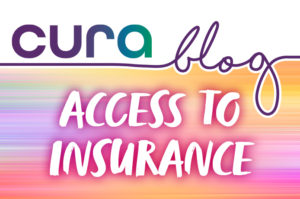Vascular Disease Awareness Month 2022
Request a Callback
By clicking on submit I / We give consent for you to call me / us on the number provided to discuss my / our financial requirements.
Caring - Understanding - Reliable - Advice
Home » Guides & News » Vascular Disease Awareness Month 2022

Vascular Disease Awareness Month 2022
With it being Vascular Disease Awareness Month, we thought it might be useful having a little run down of what some of these conditions are, and what they might mean when it comes to life insurance, critical illness cover and income protection.
Please bear in mind that when we are detailing potential outcomes for insurance below we are referring to personal protection policies. These are policies that are arranged by yourself, you own them and pay for them out of your own money. There can be options to arrange protection insurance through businesses, that offer far more cover than through a personal route. If you own a Ltd company please contact one of our advisers so that we can discuss business insurance policies with you.
Those at risk
As with many things, there are thought to be a number of causes or things that might put you at more risk of developing a vascular disease. These can be things such as:
- Family history of vascular disease, stroke or heart attack
- Lack of physical activity
- Being overweight or having a high BMI
- Diabetes
- High blood pressure
- Smoking
Vascular disease is an umbrella term for a number of different conditions, all of which can affect your blood vessels. Some examples of vascular disease are:
Aneurysm
Aneurysms can come in all sorts of shapes and sizes. Some might be minute with little effect whereas others can be much bigger and cause certain symptoms too. If an aneurysm ruptures this is when a stroke occurs. This could be considered as minor, known as a TIA or transient ischemic attack, or a full stroke.
The availability of life insurance, critical illness cover and income protection can differ quite significantly depending upon if you have an aneurysm, if you have experienced a TIA, or if you have had a stroke. For life insurance you might be able to get standard terms of cover if your stroke was caused by the contraceptive pill or a traumatic head injury. These are very specific circumstances and it is not guaranteed that these will result in standard terms, it depends upon many factors including upon any long lasting complications that you experience. There is a greater chance of standard terms if what you experienced was a mini-stroke (TIA).
For critical illness cover the options can be quite limited as one of the key areas that you can claim on in the policy is a stroke. With you having an aneurysm or already having a stroke, this means that you have a higher chance of having a stroke than others. Whilst it is tricky it doesn’t necessarily mean it is a no, but please be aware that if you are eligible to have a policy it will most likely have an exclusion for any claim related to a stroke or connected conditions.
For income protection you are very likely to find that the policy will have what is known as a cerebrovascular exclusion, so that any claims relating to your aneurysm or previous stroke would not be covered in the future. It is quite likely that you will need to look at more specialist income protection options, to be able to secure this type of cover.
Pulmonary embolism
A blood clot can be a cause of a pulmonary embolism, which is a blockage to the lungs. Usually an insurer will want to see a medical report from your GP surgery if you have had a pulmonary embolism. They will want to see how many you have had, how much time has passed and if any causes were found. If there has only been one occurrence, it could be that you are offered life insurance at standard terms, but if there has been multiple embolisms you might see a price increase.
There are times where applications are postponed or cancelled, this is most likely if the blood clot has not been removed or you are awaiting further tests. In this case, we might choose to look into other insurers or approach a specialist insurer who is more suited to your circumstances. This is also similar to what you might find when applying for critical illness cover.
When it comes to income protection, the insurer will want to see if you have previously had time off work because of the embolism, and if the condition is impacting your day to day life. An insurer could offer terms at standard rates if there had been no need for strong medication and it was just a one off. If there were multiple cases, you might see a price increase or an exclusion on the policy.
Deep vein thrombosis (DVT)
Thrombosis happens when a blood clot blocks an artery or vein, quite often this happens in the leg. There’s a number of symptoms, such as swelling, throbbing, warm skin or red or darkened skin with a painful area.
Depending on your situation, life insurance can potentially be available at standard terms. This is usually if the blood clot was of low severity and hasn’t been caused by another health condition. If the blood clot affects your daily life or you experience quite a few symptoms, it could be that you receive special terms, which is usually in the form of a price increase. To make the decision, an insurer might request a medical report from your GP to get a clear picture of your health.
As with an application for life insurance, an insurer may ask to see a medical report if you’re applying for critical illness cover. The terms offered can also be quite similar. If you experience strong symptoms or there have been any complications, the insurer might offer you a policy at an increased premium.
Income protection policies for a person with thrombosis may come at non-standard terms, which would be either a price increase and/or an exclusion added on to the policy. This of course depends completely on your own circumstances, so it can be difficult to say exactly what you might be offered. For example, a one off blood clot due to a long flight that you experienced 2 years ago and have fully recovered from, might have very little bearing upon your application and you could get standard terms with some insurers. For others where there have been multiple and/or recent blood clots, the insurer is not likely to offer standard terms.
Peripheral artery disease or peripheral vascular disease
This is quite a common condition, where a build up in the arteries restricts the blood to the leg muscles. A lot of people with this condition won’t notice any symptoms, but others might see things such as numbness or weakness in the legs, changing of skin colour on the legs or hair loss on legs and feet.
For life insurance you are quite likely to find that insurers will ask your permission to see a report from your GP to confirm your diagnosis, the tests they have done and the treatments that you have had. Once they have this report the insurer will decide if they can offer you life insurance or not and if they can it will likely be at an increased premium. This doesn’t mean silly prices, it’s always worth asking our advisers to get you a no obligation quotation to see how you feel about the cost.
Critical illness cover on the standard market is unlikely to be available when you have peripheral artery disease. There can be specialist options that may be available to you, but please take care to read the exclusions on the policies as they will likely exclude any claim relating to your condition and this could include strokes and heart attacks, depending upon your circumstances.
Income protection will also be more difficult to arrange than life insurance and will also exclude any claims relating to your peripheral artery disease. There are many situations and health conditions that could lead you to still make a claim on the policy, even with this exclusion, and it really can be worthwhile to have a good look at what is on offer. Many standard insurers will not be able to offer you income protection, but our advisers know where to look to find it for you.
If you’re trying to find protection insurance and have been diagnosed with a vascular disease, or just have some questions before you start your protection insurance journey, we have a number of advisers on hand ready to help.
Related blogs
The insurance application process in 3 steps
5 Tips on how to choose the right protection adviser
How to get the all important protection insurance that you need
Categories: Access to insurance
Client Reviews








Talk to a Friendly Adviser
Get a Quote
What We Offer?
- Experienced and knowledgeable advisers
- Specialist advice with no fees to pay
- Full assistance with all of your paperwork
- Put your policy into trust at no cost
- A dedicated insurance adviser for you
Our Recent Awards



























